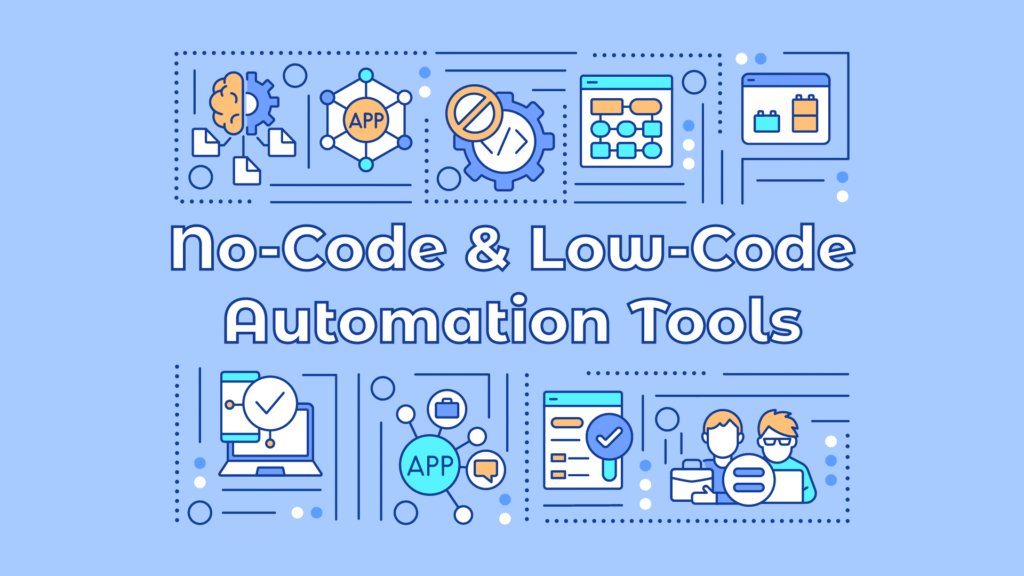
In today’s fast-paced startup ecosystem, especially across the USA and Canada, speed is everything. From validating a bold idea to capturing an early user base, launching a minimum viable product (MVP) quickly can mean the difference between leading the market or trailing behind. That’s where low‑code/no‑code (LCNC) and automation platforms step in as powerful enablers, democratizing development and reshaping what it means to get to market.
1. The Rise of Citizen Developers & Market Demand
By 2025, 70% of new enterprise apps are expected to be built on LCNC platforms, a dramatic jump from just 25% in 2020. Organisations are inviting “citizen developers” (marketing managers, operations team members, even startup founders) to take control of building the software they need, without waiting on scarce engineering resources.
In both the US and Canada, digital-first policies (such as Canada’s CDAP program, which encouraged SMBs to adopt digital tools) have turbocharged demand for fast, cost-effective development solutions.
2. Speed: Build MVPs in Weeks, Not Months
For startups racing to test product-market fit, LCNC tools deliver, using drag‑and‑drop editors, templates, ready-made integrations, and automation workflows. Teams can reduce development timelines by up to 90%, launching MVPs in a few weeks, not many months.
Take Webflow: it enables startups to design responsive websites, landing pages, and e-commerce experiences, all with built-in CMS, SEO tools, and payment integrations like Stripe or PayPal. Likewise, Bubble, Glide, and Adalo allow for building SaaS apps, dashboards, and mobile apps visually, without writing code.
3. Cost-Efficiency & Focused Resource Allocation
LCNC tools slash costs. Many startups initially avoid hiring full-time engineers, potentially saving millions over a few years. This enables teams to redirect their budget toward strategic areas, such as marketing, partnerships, and growth.
This democratising effect allows startups to act quickly, without waiting for investor rounds or extended hiring cycles.
4. Real-world Case: No-Code Success Story
Consider the story of Scribly.io, created by founder Dani Bell without writing a single line of code. By using Webflow for the site, Airtable for client workflow, and Zapier to glue it together, she launched a full-service marketing company that reached 23 clients and $25K/mo recurring revenue within 19 months. That’s the power of patchwork automation and no-code platforms working together—fast, affordable, and business-ready.
5. Unlocking Automation: Beyond Basic Apps
Automation tools like Zapier, Make, and Parabola are critical companions to LCNC platforms: they orchestrate workflows, trigger actions between apps, and eliminate manual work. Yet as startups scale, technical debt and cost creep can become issues, prompting some to migrate critical automation into custom code or serverless logic such as AWS Lambda.
Savvy founders adopt a hybrid strategy: prototyping a workflow using no-code, then transitioning to custom code when volume or complexity demands it, balancing speed for early MVPs with sustainability for long-term operations.
6. AI-Powered Low-Code: The Next Frontier
LCNC platforms are rapidly integrating AI and intelligent automation. Predictive analytics, UI-from-text prompts, and auto-generated logic are becoming standard. In fact, by 2025, up to 40% of companies are expected to use no-code AI for predictive modelling and content generation.
Platforms such as Bubble AI, Lovable, and Bolt.new are using AI assistants to convert user descriptions into app layouts, back-end logic, and workflows with no engineering needed.
7. When to Shift from No-Code to Code
Low-code/no-code shines for MVPs, internal tools, marketing sites, dashboards, and basic SaaS offerings, but it has limits:
- Scalability: High-load systems, advanced custom workflows, or heavy integrations may exceed LCNC performance.
- Customisation constraints: Creating highly unique or niche features can be hampered by templated workflows.
- Vendor lock-in: Changing platforms can become costly, and dependency affects data portability.
For startups planning rapid growth, a smart hybrid model offers the best of both worlds: start with no-code for speed, then transition toward custom code as requirements mature.
8. Why US & Canadian Startups Should Embrace LCNC Today
- Lean budgets & competitive pressure make cost‑efficient MVPs vital.
- Urban startup hubs (NYC, Toronto, Vancouver, Austin) are bursting with new ventures needing speed and scalability.
- Government incentives (e.g., Canada’s digital grants) reward real digital adoption even when built using platforms, not full-stack teams.
- Global competitiveness: fast, well-functioning MVPs help land early traction, raise funding, and attract early customers ahead of competitors.
9. A Practical Playbook for Business & Tech Owners
- Identify core MVP features: define the minimal set needed to test real user interest.
- Select your stack: e.g., Webflow + Airtable + Zapier, or Bubble + AI assistant + Glidesheet. Mix visual tools with automation.
- Build fast, test fast: iteratively launch and refine based on real feedback.
- Monitor cost and scale triggers: watch for rising automation costs or performance slowdowns—a signal to migrate.
- Plan a hybrid shift: as you scale, move critical logic into custom code or APIs, retaining flexibility and ownership.
- Enforce governance: involve IT early for data security, integration plans, and version control.
10. The Future Outlook: From Experimentation to Strategy
Low‑code/no‑code is no longer a niche hack, it’s becoming a strategic tool. Gartner and KPMG see LCNC as the preferred software development method by 2025, with enterprise adoption accelerating across sectors.
As investment in LCNC platforms surges, projected to hit $187B by 2030, startups that use these tools today gain a powerful edge: faster validation, lower cost, and greater flexibility, all while conserving precious engineering resources for strategic scaling.
For global business and tech leaders, especially in the US and Canada, embracing low‑code/no‑code and automation is a smart strategy. Whether you’re testing an idea, launching a new product, or automating internal workflows, these platforms can unlock speed, efficiency, and agility.
Ready to build fast and start winning early? BoznG makes it possible. And as your venture grows, you can evolve confidently into custom software territory.